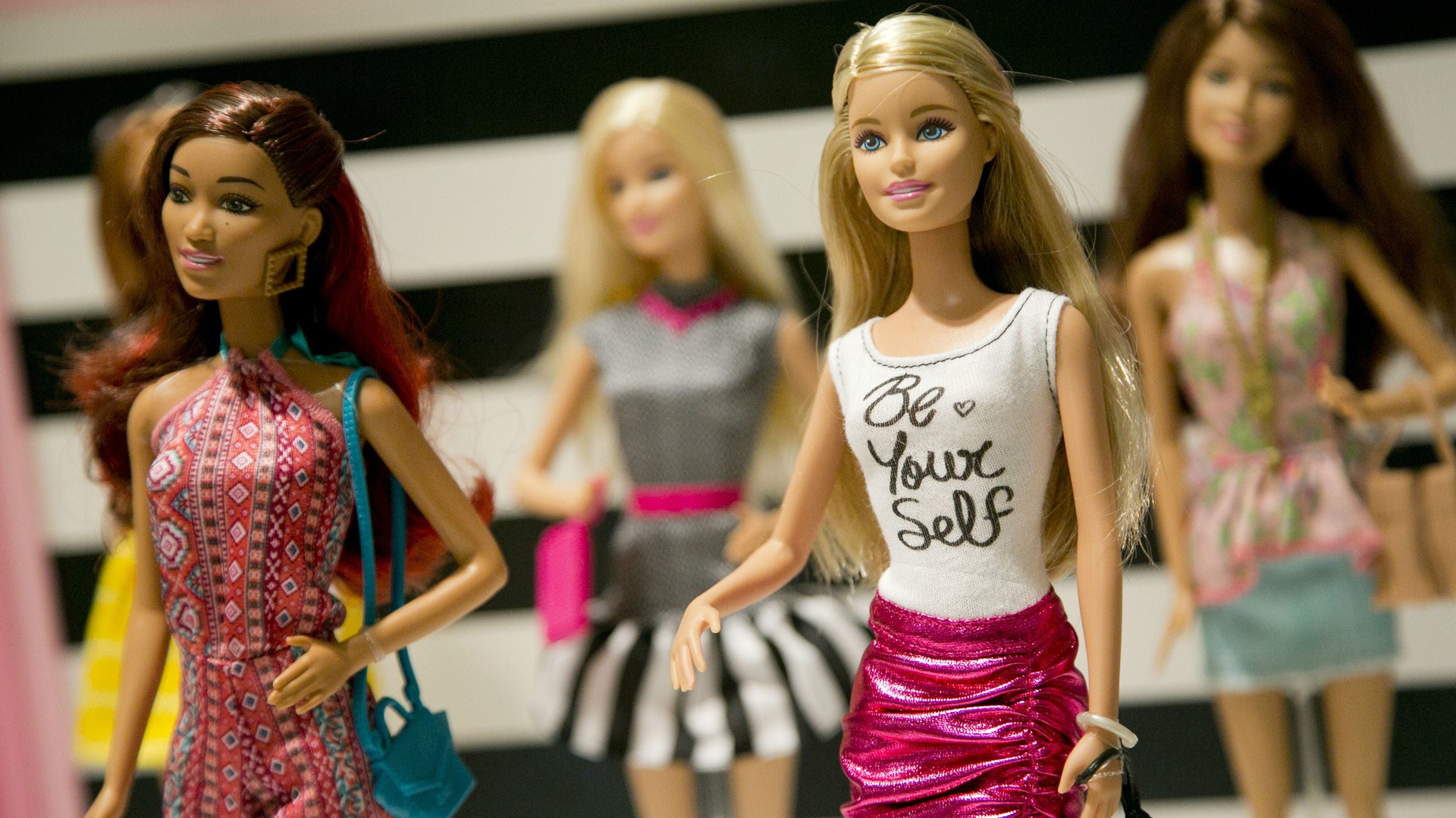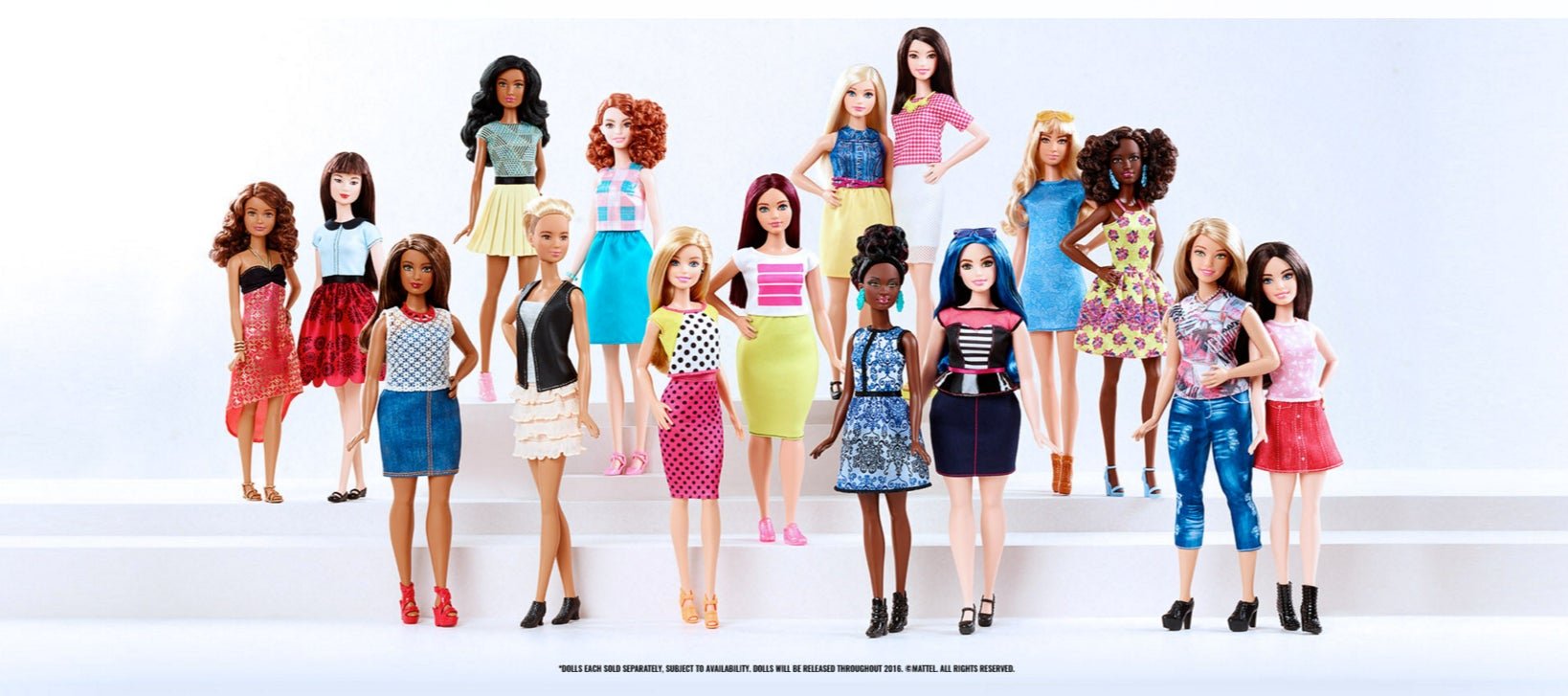Curvy, petite, and tall Barbies will do nothing to empower our girls
“Can we stop talking about my body?” asks a Barbie doll on the cover of Time magazine. Most of her body, pictured in profile, is in complete shade, making her look like a silhouette. It’s not the one we’ve seen for decades, but a more realistic body—if you ignore the silky blonde hair, the enormous eyes and invisible nose, the long fingers and perfectly shaped lips.


“Can we stop talking about my body?” asks a Barbie doll on the cover of Time magazine. Most of her body, pictured in profile, is in complete shade, making her look like a silhouette. It’s not the one we’ve seen for decades, but a more realistic body—if you ignore the silky blonde hair, the enormous eyes and invisible nose, the long fingers and perfectly shaped lips.
The Barbie on the cover looks curvier—her waist is not impossibly thin, her breasts smaller than her hips. Personal Trainer Barbie must be so disappointed in her.
It’s all true. Barbie put on weight and has some news for you—well, Mattel does: Petite Barbie, Tall Barbie, Curvy Barbie are here, sold alongside the original Barbie, for the very same price. They are the Fashionista Barbies!
Finally.

Instead of raising girls who believe they should reach some unrealistic, fantasy world figure, we can now raise them to know, from a very young age, that they are a specific body type—one that’s well coded by fashion standards.
“What type of girl are you?” we can now ask little girls. The tall type? The petite type? The curvy type? Or are you just normal—white and perfect?
Oh, the empowerment. What a time to be born female.

While the world welcomes this marketing move as if it were the ultimate evidence of feminism, it’s actually proof that we’re still stalling. Because, in fact, we cannot stop talking about your body, Barbie. Your body is all we’re talking about. Yours—and my body, and the body of every woman.
The Pirelli calendar has become a beacon of feminism for daring to portray women who are not models. Dove advertisements push the disingenuous message that all “beauty” is born equal. Adele gets hailed for daring to show her gorgeous face on the cover of Rolling Stones with a normal amount of makeup.
This is not progress, it’s not change: it’s the same old fixation on female appearance, in disguise.
But guess what—not all women are equally beautiful. Beauty is a manifestation of nature at its very essence: cruel, unfair, and merciless.
Women are not equally beautiful—as they aren’t equally smart, funny, strong, and sensitive. And while we can’t culture-train ourselves not to notice female beauty, we can indeed focus our attention elsewhere entirely, away from measurements and shapes and and the notion that women are a collection of body parts.
What these Barbie dolls (and our society) teach—in their very names—is that a normal figure (a real woman’s body is likely closer to a “curvy” Barbie than to a regular one) is an aberration of what it should be. It’s not by playing with a chubby, short—I mean curvy, and petite—miniature version of their adult selves that girls will grow up empowered, or come to love their bodies. If anything, they might start thinking of their peculiarities as flaws from a much younger age. They’ll learn that their mothers are “petite” or “tall” or “curvy”—and that they will, too, grow up to fit an imperfect label.
Mattel secretly nicknamed the introduction of these new Barbie dolls “Project Dawn”—perhaps believing it’s the dawn of a new day. It might be a good move for the company, which was hurting from the unrealistic proportions of its products. For little girls, and women, this is no dawn—it’s just another day of being brought up to believe nothing that they are, or do, matters quite as much as the way they look.